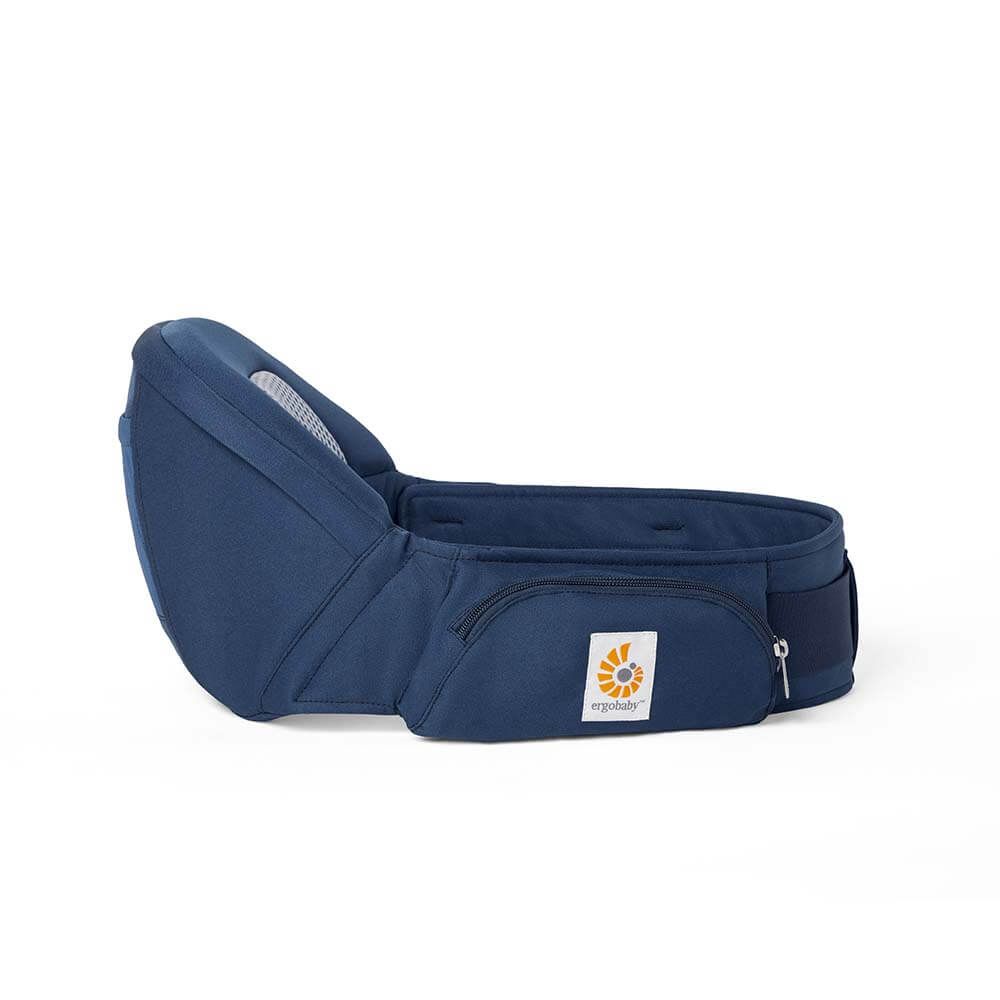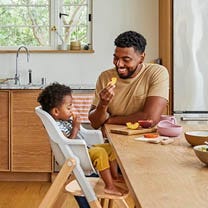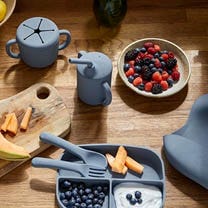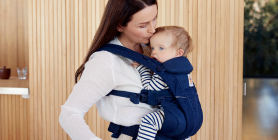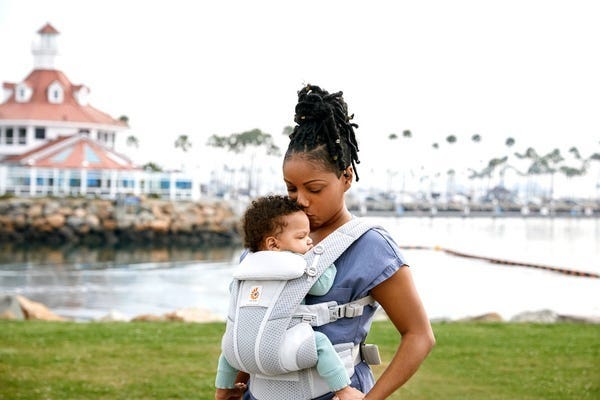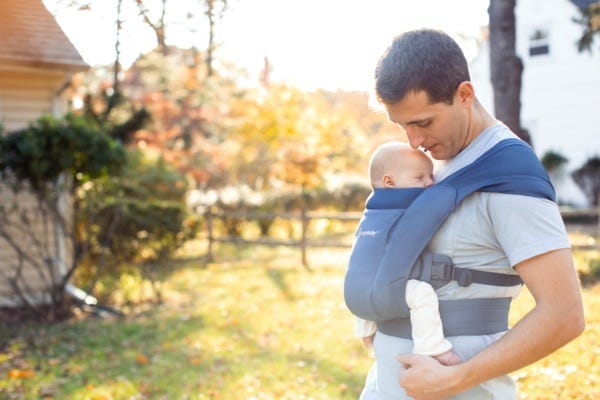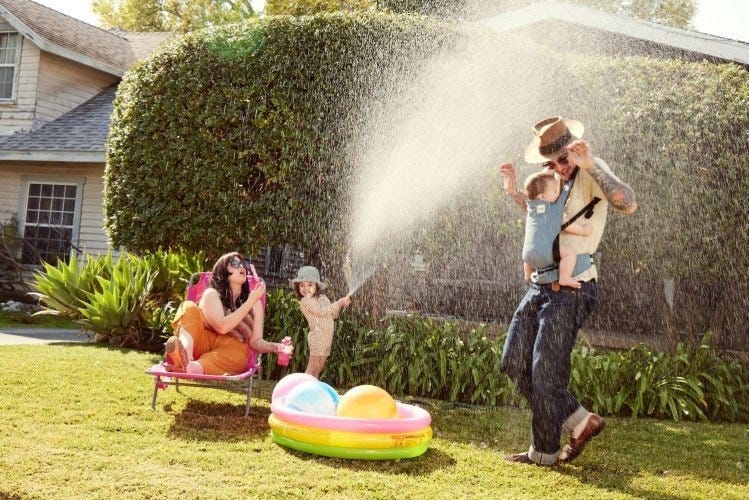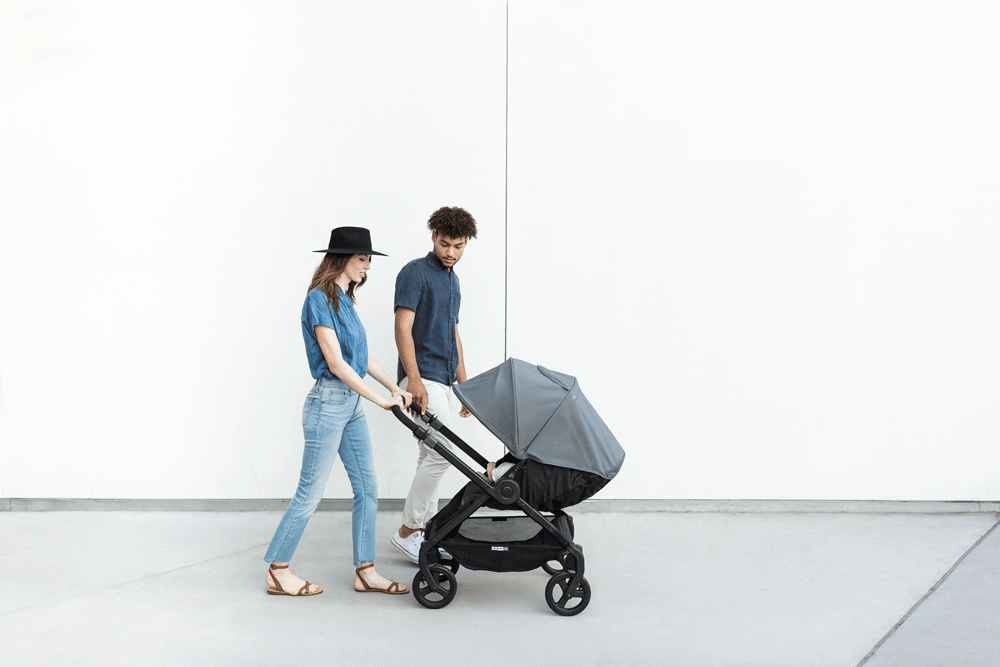
Ergobaby's 180 Reversible Stroller reversible design is better for your baby than you may know. The way you use your stroller could very well be shaping your child’s brain development. Neuroscientists have made great strides in the last decade in understanding how babies’ brains develop. It has relevance to all sorts of parenting decisions, including what kind of stroller to buy and how best to use it. Ironically, most parents still have little awareness of that information. There are two particularly important insights that emerge from these discoveries. The first is that brains are developing more rapidly in the first 3 years of life than they ever will again. These are, of course, precisely the years that a child spends in a stroller. The second is that relationships with people have a massive impact on the pathways that form in the brain. The direction that a stroller faces naturally changes the way a baby experiences her relationship with her parent. Human babies are born already connected to other people. They have brains that monitor others’ facial expressions, vocal tone, smell, and even heart rate. Babies are designed to read everything that other people do as ‘meaningful’. Their brain needs to see it as meaningful because it is trying to figure out how the world works. The baby’s brain is looking for patterns that are predictable. That search is one of the things driving all that neural growth. The baby wants to figure out how to stay as emotionally connected to a parent as possible because that’s when they feel safest. Author Sue Gerhardt puts it this way in her best-selling book Why Love Matters (pg. 11): “Babies’ experience of parents’ behavior has as much influence on the child’s emotional make-up as his or her genetic influence.” How can this scientific information help us to think more about stroller use? It tells us that when the baby is in a parent-facing orientation, they can stay emotionally connected through seeing your face and hearing your voice. That will help them to feel safe, perhaps even safe enough to fall asleep faster or to look around curiously at the wider world. When they are facing forward, though, they can only stay connected to you through your voice. On busy city streets, it can be hard even to hear that voice. Traffic flowing on city streets easily reaches 80 decibels in volume, sometimes 90. It is interesting to note that the American Academy of Paediatrics states that 85 decibels is the threshold for dangerous levels of noise. This means that the majority of babies being pushed on city streets today are taking rides in environments that are uncomfortably loud. It also means that most of them won’t have a parent’s face within view for the moments they might feel scared. If a baby feels scared, their body can’t calm down on their own. The immaturity of the brain and physiological systems means they are dependent on the presence of a trusted adult to truly relax. Is it really true that ‘most’ babies will be having this anxious experience? That will come as a surprise to many parents reading this blog, since the forward-facing orientation has become so normalized in Western cultures. Two systematic studies, both of which observed stroller use on main city streets (in the UK and in New Zealand), have both confirmed that the majority of strollers are used in a forward-facing position. Both studies also showed that when strollers were in a forward-facing orientation, conversation was much less likely to be occurring than when babies were facing the pusher. That’s not surprising, of course. Human beings are understandably less likely to speak to someone they can’t see face-to-face. However, when we consider the evidence showing that the amount of talking a parent does has a big impact on a child’s language development, it lets us think again about how long today’s babies may be spending sitting facing away from their parents, strolling along streets that are uncomfortably loud. Once we put it this way, it isn’t hard to realize strollers could indeed be having an impact on infant brain development. (Car seats probably are, as well, but that’s another blog!) So when are babies old enough to ride in strollers that face outward? Well, there’s little science to give exact guidance. That’s why we need more investigation. For now, what we do know is that as babies become old enough to crawl, and their world gets bigger, they spend an increasing amount of time engaging in a phenomenon that psychologists call ‘social referencing’. Babies take quick glances at parents’ faces, using the emotional expression that they find there as a guide to how the baby himself should feel about something. For example, if a big dog comes bouncing toward you in your stroller, should you feel excited or scared? Prior to the age of one year (and even well after), a baby reaches her conclusion by consulting her parent’s face. But if you are baby riding in a stroller that faces forward, looking out at a big dog or a noisy taxi, then you don’t have any information available to help you figure out how to respond. For babies with immature brains, life is always harder if you don’t have anyone around to offer emotional help. That’s one of the things that’s terrific about the 180 Reversible stroller. Unlike many other stroller models, it is super easy to change the orientation. If you’re out in a park, where it is not very loud, the baby might be keen to look outward. But when the two of you get back to loud streets, the baby can easily be shifted into a parent-facing orientation, so that the sense of safety and even fun can continue. Perhaps as manufacturers of infant products become aware of the emerging neuroscience, they will be able to think in more depth about the implications it holds for stroller design. Manufacturers’ products are shaping infant brain development in ways they do not realize. This insight can feel sobering, and even controversial, as responses to an earlier article in the New York Times revealed. Until that point, though, what’s a parent to do? Here are my two main tips. First, let the baby tell you when they are ready to face outward. If they are craning their head, clearly keen to face forward, then turn them around. If they aren’t doing that yet, it's a signal that they feel safe and happy precisely because they can see your face. Second, when you do turn the baby around -- keep talking, talking, talking.
Emotional Benefits of Getting Outside
Spending time in nature with your baby can strengthen the bond between you. The simple act of holding your baby close, feeling their warmth, and sharing new experiences together can create strong emotional connections. It’s also a wonderful way to reduce stress and improve your mood. When my littles were extra fussy, I’d take a walk around the neighborhood. Even though I don't live in an area with trails and surrounded by nature, simply behind outside changed everything. A little vitamin D does wonders!
Cognitive Development
Nature is a sensory wonderland for babies. The different sights, sounds, and smells can stimulate your baby’s senses and promote cognitive development. Watching leaves rustle, hearing birds chirp, and feeling the texture of a tree bark can all contribute to their learning and development.
All About Baby Carriers for Nature Adventures
Choosing the Right Baby Carrier
When it comes to selecting the best baby carrier for summer adventures, there are several options to consider.
Types of Baby Carriers:
- Wraps: Perfect for newborns, providing a snug and secure fit.
- Slings: Ideal for quick and easy use, offering good ventilation.
- Soft Structured Carriers: Versatile and comfortable for both parent and baby, suitable for longer trips.
Factors to Consider:
- Baby’s Age and Weight: Ensure the carrier is appropriate for your baby’s size and weight. For example, Ergobaby’s Embrace Newborn Carrier is perfect for the fourth trimester where baby is small and you’re looking for an easy way to stay close. As they grow, you’ll want to upgrade to an all-position carrier that’s meant for growing babies.
- Parent’s Comfort and Ergonomics: Look for carriers with padded shoulder straps and lumbar support if you’re planning on longer outings.
- Ease of Use: Choose a carrier that is easy to put on and take off.
- Climate and Breathability: Opt for carriers made of breathable fabrics to keep you and your baby cool in hot weather.
Safety Tips:
- Proper Positioning: Ensure your baby is seated correctly, with their legs in an "M" position and their head should be close enough to kiss.
- Checking for Wear and Tear: Regularly inspect your carrier for any signs of damage.
- Ensuring Adequate Support: Make sure the carrier provides proper support for your baby’s head and neck.
Exploring Nature with a Baby Carrier
Ideal Spots for a Nature Walk with Baby
- Parks and Gardens: Great for leisurely walks and picnics.
- Nature Trails and Forests: Perfect for more adventurous outings.
- Beaches and Lakesides: Wonderful for enjoying the water and sand, with the right carrier.
Activity Ideas
- Hiking: Enjoy a scenic hike with a hiking baby carrier that offers support and storage.
- Bird Watching: Use your carrier to keep your baby close while you explore and observe wildlife.
- Picnics: A carrier can free up your hands, making it easier to carry picnic supplies.
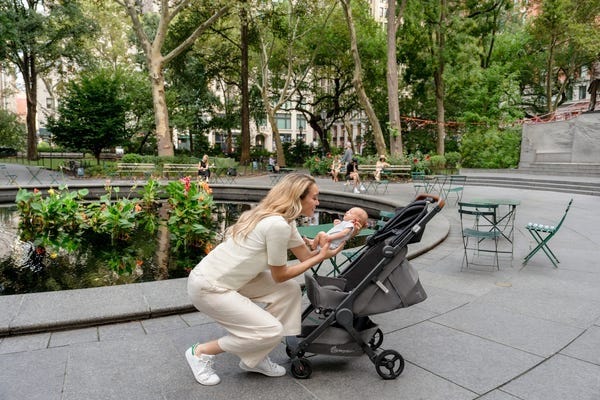

Advantages of Using Strollers for Nature Adventures
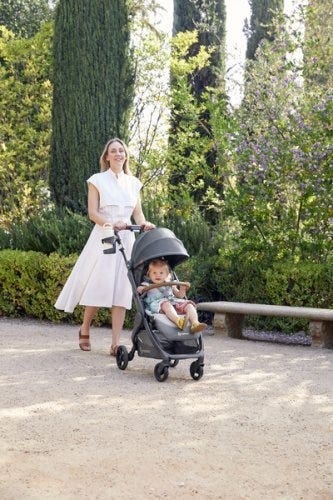

While baby carriers are fantastic for mobility and closeness, depending on the adventure of choice you might want to be a stroller along too.
There are a LOT of baby stroller options on the market. So we understand how confusing it can be to choose the one that’s right for your family. Not only are there a variety of brands, but a variety of strollers that serve different purposes.
There are a few types of strollers on the market:
- Full-sized stroller: This is typically the stroller parents thing of buying for all its versatility.
- Lightweight or umbrella stroller:These compact strollers are perfect for on-the-go adventures.
- Jogging stroller: Designed for parents who want to combine fitness with outdoor adventures.
- Double stroller: Designed for parents with multiple kids, especially twins.
- Car seat carrier: These strollers connect to a specific car seat. We don't typically recommend these as they can be unsafe for baby and uncomfortable for parents who are pushing.
Learn more about the types of strollers and which one would be best for you.
Benefits of Bringing a Stroller
- Storage Space for Gear: Ample room for carrying all your essentials like a diaper bag, beach toys and more.
- Shade and Weather Protection: Built-in canopies to shield your baby from the sun when they are lounging.
- Options: If you have more than one kid, you can stroll with one and carry the other. Or, if you’re getting warm or your little one is getting fussy, you can switch up their position from stroller to carrier or vice versa.
Safety Tips for Strollers
- Ensure your stroller is in good working condition. Make sure buckles are still buckling and that there are no rips or holes that could compromise your baby’s safety.
- Use sunshades or bug nets to protect your little one’s skin.
- Securing the baby properly: always buckle up your baby for safety even if you think they are old enough to go without the buckle.
Combining Baby Carriers and Strollers
For the ultimate flexibility, consider using both a baby carrier and a stroller on your outings.
Combining both options allows you to adapt to different situations. Use the carrier for more rugged trails and switch to the stroller for smoother paths or when your baby needs a nap.
Transition Tips
- Smooth Transitions: Plan stops where you can easily switch from carrier to stroller.
- Pack Light: Only bring essentials to make transitions easier.
Tips for a Successful Adventure
Planning Ahead
- Route Planning: Choose baby-friendly trails and parks. Check local mom groups or outdoor groups and get recommendations for the best outings for kids.
- Check Weather Conditions: Avoid extreme heat or unpredictable weather. Even with our most breathable carriers, when it’s hot, it’s hot. And having two bodies against each other in the heat will be naturally hot and sticky already.
- Packing Checklist: Include diapers, snacks, water, sunscreen, and a first-aid kit. These all-position carriers have storage pockets where you can fit some of the items easily!
- Stay Hydrated and Nourished: Pack healthy snacks to keep energy levels up and bring plenty of water for both you and baby.
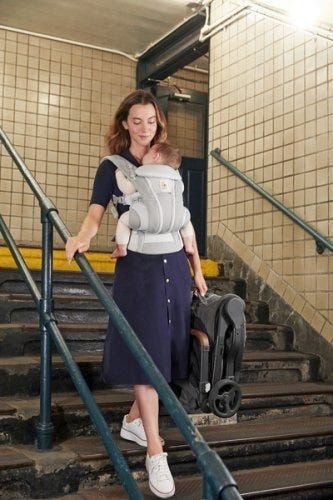

Summer adventures with your baby are a wonderful way to create lasting memories and enjoy the beauty of nature together. From baby carriers to strollers, Ergobaby products are designed to provide comfort and ease for both you and your little one. So, gear up, get outside, and explore the world with your baby by your side.
Ready to embark on your own summer adventures? Check out Ergobaby’s range of baby carriers and strollers to find the perfect match for your family’s needs. Visit our website today and start planning your next outdoor excursion!





